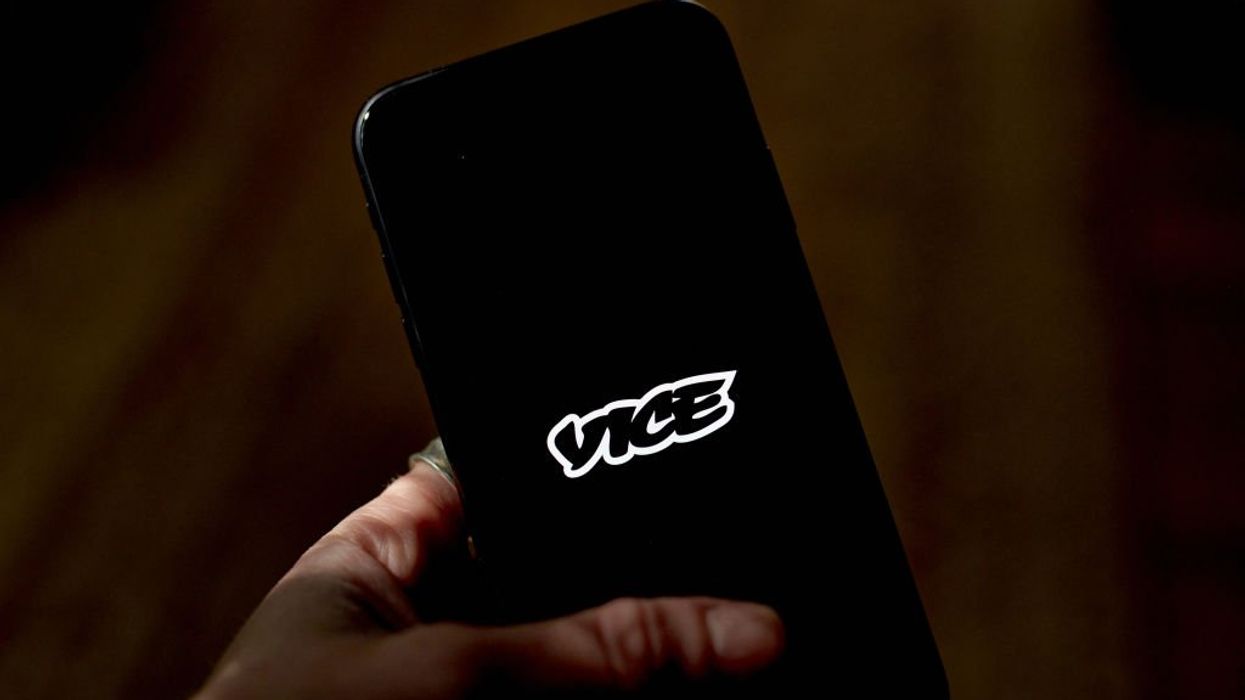From hipster hype to financial flop: Vice Media, RIP

In the end, Vice Media was little more than a hipster Ponzi scheme that preyed on the elderly.
The company last week announced that it would lay off hundreds of staffers and stop publishing content at Vice.com. Following last year’s bankruptcy filing, CEO Bruce Dixon said it was “no longer cost-effective” for the company to distribute its own content and pledged to pivot, once again, to a business model that might profit. Now, they company would like to be a production studio for the established media companies it used to mock.
Vice Media’s website will leave us with some of the most ridiculous far-lefty nonsense spewed into the world.
It was a company built on the sizzle and BS of founder Shane Smith, who dressed like one of the Blues Brothers and sold a great story to “traditional” news executives. Its pitch: Vice understood the secret sauce of capturing the next generation of news consumers, the ones fleeing mainstream media.
The company did things that might have sent a guy called Trump to jail — at least 25 years ago. Like paying someone to pretend he was an MTV executive interested in a show to mislead a reporter profiling the company. Or having Vice employees bring friends with laptops to pose as workers.
Vice was accused of using hidden techniques to artificially inflate its audience numbers. According to one of Smith’s former girlfriends, “Shane would talk all the time about how stupid people were for giving them money.”
After being warned by a Vice employee of the company’s sizzle minus the steak, one investor replied, “You were totally right, but the story is good, and we’re just gonna pass it on to the next guy.”
An early, important investor was my ex-boss, Rupert Murdoch, whom Smith reportedly told, “I have Gen Y, I have social, I have online video. You have none of that. I have the future; you have the past.”
It worked. Murdoch invested $70 million in 2013, pushing Vice’s valuation to $1.4 billion.
A few months later, I noticed a problem. At the time, I ran FoxNews.com and was looking to boost our social media presence. Analyzing other media outlets, it became apparent to me that Vice’s Facebook numbers were inflated to the point of nonsense. The company had millions of supposed followers, but its posts generated a tiny number of comments and interactions. It was a clear sign of either bot accounts or, more likely, overseas “users” who would follow a Facebook page for pennies.
Since the boss had just dropped $70 million, I thought I should give him a heads-up. After a meeting, I mentioned what I had found to Rupert, summarizing it as “they’re full of s**t.”
I expected him to be perhaps a tad bit worried, but that wasn’t in Rupert's DNA. He just chuckled and said, “Of course they’re full of s**t.”
The next year, a venture-capital firm and A&E invested $500 million, raising Vice’s valuation to $2.5 billion. By 2017, another $450 million investment pushed its worth to nearly $6 billion.
Money like that buys a lot of video production, articles, and audience. With it, Vice spawned two feature film studios, a publishing arm, a cable TV channel, and more.
All gone.
Shane Smith pocketed more than $100 million personally, telling a friend he’d become “post-economic.” His lavish lifestyle signaled prosperity to investors, but his purchase of a $23 million Los Angeles home reportedly drove lowly Vice workers to form a union. (Remember the massive mansion shootout scene in “Beverly Hills Cop”? That was the place. Smith eventually sold the house for $49 million.)
But there was something Vice couldn’t buy: profitability.
The company did produce some fascinating content, albeit with a healthy dollop of youthful smugness. When you have a billion dollars to blow without really caring about a profit, that hobby can be quite entertaining.
Its website, however, will also leave us with some of the most ridiculous far-lefty nonsense spewed into the world.
Here is a small sampling of my favorites:
As Vice Media staggers into the sunset, its legacy isn’t the edgy content it promised, but rather the shenanigans, debt, and fleeced investors. In the world of media, being the coolest kid in the room doesn’t always pay the bills.
Source link

